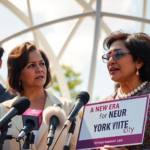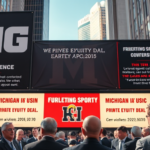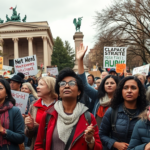Women’s Financial Inclusion is Rising, but Barriers Remain
A new report from the World Bank’s Global Findex 2025 reveals a significant uptick in women’s financial inclusion in low- and middle-income countries (LMICs). According to the report, 73% of women in these regions now have financial accounts, marking a seven-percentage point rise from 2021. The increase underscores the importance of financial inclusion, yet reveals persistent gaps in equal access and utilization.
Progress in Account Ownership and Digital Payments
The data shows more women are leveraging their accounts to save and make digital payments—two key indicators of financial engagement. As of 2024, 36% of these women are saving formally, and 58% are involved in digital transactions, including a 38% engagement in digital merchant payments.
This advancement indicates a move towards greater financial independence, which, according to financial analysts, could have significant implications for economic empowerment and resilience, especially amid economic uncertainties like inflation or job instability.
Persistent Challenges for Unbanked Women
Despite these gains, nearly 700 million women globally remain without financial accounts. Barriers such as insufficient funds, high service fees, and reliance on family accounts continue to hinder access. Mobile connectivity paired with digital financial solutions presents a notable opportunity to lower these barriers, as more than 80% of women in developing economies own mobile phones. Mobile money accounts are emerging as a feasible alternative, particularly in Sub-Saharan Africa and Bangladesh.
John Smith, a financial consultant based in Washington D.C., commented, “Mobile technology is the pivot on which financial inclusion can turn. It provides women with cheaper and more convenient access to financial systems.”
Digital Payments as a Catalyst
The report underscores that digital payments are a potent driver for female account holders. An estimated 60% of women in LMICs have opened an account to receive digital payments. This growth indicates that increasing digital payment options for unbanked women could serve as an entry point into the formal financial system.
Financially inclusive ecosystems that incorporate digital transactions open opportunities for women to expand their economic participation, which might, in the long run, elevate poverty-reducing impacts.
Enhancing Women’s Financial Health
Ownership of financial accounts is a starting point; real progress occurs when these accounts translate to tangible benefits such as improved financial health. Women still face difficulties accessing funds during financial emergencies, suggesting the need for personalized financial services.
Dr. Mary Johnson, a gender economist at ThinkInclusive, emphasizes, “Achieving equal financial use requires tailoring products that align with women’s specific financial patterns and socio-economic contexts.”
World Bank Initiatives for Gender Strategy
The World Bank aims to bridge the financial gap by supplying capital to 80 million women and women-led businesses by 2030. This move is part of a broader gender strategy focused on boosting women’s economic opportunities.
Such investments are anticipated to not only empower individual women but also catalyze broader societal changes by facilitating market development and fostering gender parity, an outcome expected to trickle down to various sectors.
Looking Forward: Opportunities and Challenges
With advances in mobile money and digital payments, the landscape is ripe for further improvements in women’s financial inclusion. However, parallel efforts to enhance digital infrastructures such as improving mobile connectivity and reducing financial literacy gaps remain essential.
Jonah Kimani, an IT professional involved in mobile banking projects, remarked, “Supporting infrastructure advancements and literacy programs is crucial. Only then can financial inclusion be genuinely comprehensive and accessible.”
As these efforts unfold, stakeholders are encouraged to collaborate, ensuring that solutions are inclusive, accountable, and sustainable. The potential for transformational change is significant, paving pathways for women not just to participate, but thrive economically.
Accessing Resources
For those interested in further details, the World Bank offers country-specific insights through the newly released Country Gender Data Landscapes. These resources provide valuable information for stakeholders seeking to focus efforts and resources efficiently.
As this story continues to develop, it represents a key issue of community interest, underscoring the global commitment to fostering gender equality in financial access—an essential lever in achieving broad-based economic prosperity.
In conclusion, while notable progress in women’s financial inclusion is underway, the journey towards full equality requires sustained effort and innovative strategies to overcome existing blockades. For communities, this represents both a challenge and an opportunity to create equitable financial systems.







